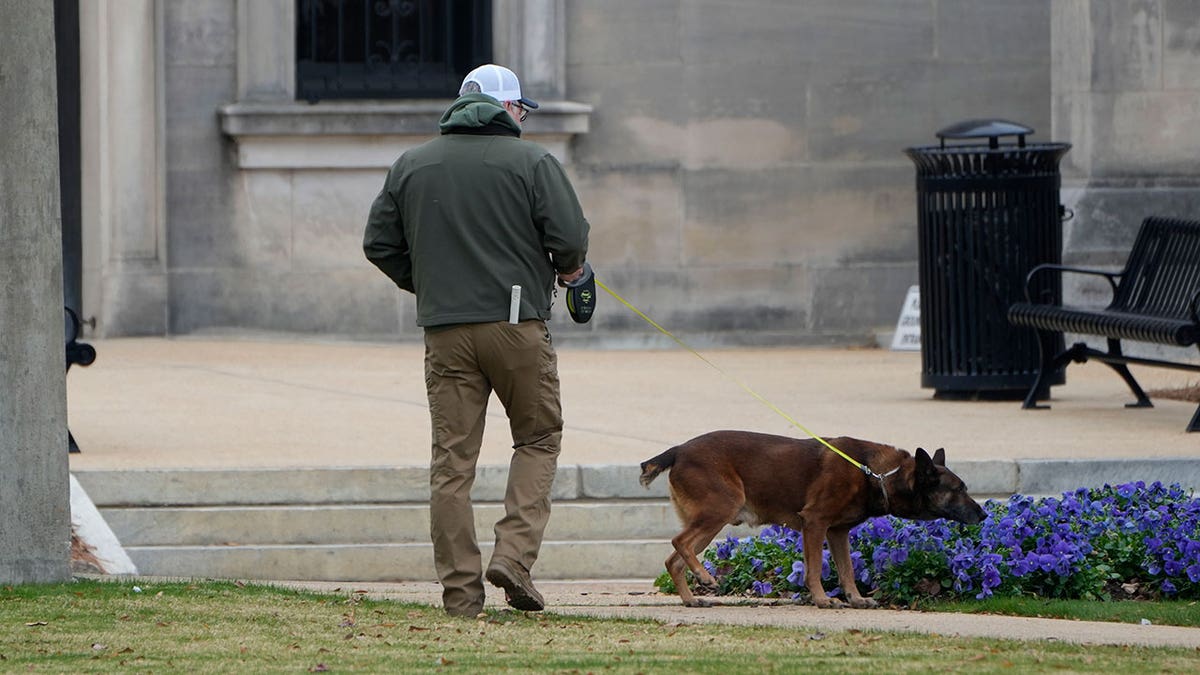FBI rules out terrorism in fiery Rochester car crash
Fox News' Alexis McAdams provides updates on the investigation into the crash that left two dead and nine injured.
- A mass email threat sent to officials in several U.S. states on Wednesday led to brief disruptions in government affairs.
- Despite the evacuations, no explosives were discovered, and federal officials dismissed the bomb threats as hoaxes.
- The bomb threats followed a series of false reports, known as "swatting," targeting public officials' homes.
A bomb threat emailed to officials in several states early Wednesday briefly disrupted government affairs and prompted some state capitol evacuations, but no explosives were found and federal officials quickly dismissed the threats as a hoax.
The threats follow a spate of false reports of shootings at the homes of public officials in recent days.
Connecticut, Georgia, Hawaii, Kentucky, Maine, Michigan, Minnesota, Mississippi and Montana were among the states that evacuated statehouse offices or buildings.
WISCONSIN MAN GETS 3 YEARS FOR BOMB THREAT AGAINST THEN-GOV. SCOTT WALKER
The FBI said it was aware of numerous hoax bomb threats at state Capitol buildings, but had "no information to indicate a specific and credible threat." The bureau said it was working with state, local and federal law enforcement to gather, share and act on information.

An ordinance sniffing dog patrols the Mississippi State Capitol grounds as Capitol Police respond to a bomb threat at the state building in Jackson, Miss., on Jan. 3, 2024. (AP Photo/Rogelio V. Solis)
"The FBI takes hoax threats very seriously because it puts innocent people at risk," it said in a statement.
Kentucky Gov. Andy Beshear said on X that the Capitol was evacuated while state police investigated a threat received by the Secretary of State’s Office. Lawmakers were elsewhere for ethics training, but Secretary of State spokeswoman Michon Lindstrom said some candidate filings were disrupted.
The "mass email" warned of multiple explosives that would go off in a few hours.
DEADLY SUBSTANCE MAILED TO WASHINGTON STATE ELECTION OFFICE
Public safety officials locked down the Mississippi Capitol on the second day of the legislative session and the state Senate delayed its morning meeting. The building was evacuated and bomb-sniffing dogs circled before an all-clear was given.
"This is an ongoing investigation and there is no further threat to the Capitol or surrounding buildings," said Bailey Martin, a spokesperson for the Mississippi Department of Public Safety.
The closures were brief and disruptions minimal in most states.
Montana’s Capitol building reopened within two hours after a sweep of the building was completed and the threat was found not to be credible, said Megan Grotzke, spokesperson for the Department of Administration.
In Minnesota, oral arguments at the state Supreme Court inside the Capitol were interrupted, but were moved to other courtrooms in the Minnesota Judicial Center, said Kyle Christopherson, a spokesperson for the Minnesota Judicial Branch.
Other states — including Wyoming, Oklahoma, Nebraska, New Hampshire, Missouri and Maryland — received threats, but didn’t close.
Several public officials have been hit by "swatting" calls in recent days. Swatting is a prank call made to emergency services intended to bring a police response.
Republican U.S. Rep. Marjorie Taylor Greene of Georgia was targeted by a fake emergency call on Christmas morning. Maine Secretary of State Shenna Bellows was hit by a "swatting" attempt a day after she removed former President Donald Trump from the state’s presidential primary ballot under the Constitution’s insurrection clause, a decision Trump is appealing.
Other public officials targeted in recent days include Republican U.S. Rep. Brandon Williams of New York, U.S. Sen. Rick Scott of Florida, Boston Mayor Michelle Wu and Ohio Attorney General Dave Yost.
Hundreds of swatting cases occur annually.






















